
by admin | Mar 25, 2022 | Mesenchymal Stem Cells, Neurodegenerative Diseases, Stem Cell Research, Stem Cell Therapy
Neurodegenerative conditions such as Alzheimer’s disease (AD), Parkinson’s disease (PD), and amyotrophic lateral sclerosis (ALS) occur when neuron populations begin to diminish. There is currently no cure for these types of diseases, though clinical trials to explore various treatment options are ongoing. In particular, regenerative medicine, also known as stem cell therapy, is being heavily researched and has shown remarkable progress in controlling these conditions.
Types of Stem Cells
Stem cells serve as the foundation for every tissue and organ throughout the body. They are unspecialized but have the incredible ability to differentiate into virtually any cell type, as well as the power to self-renew.
Neurodegenerative conditions are characterized by neurons that progressively lose their function and structure, and eventually die off. Because stem cells are able to differentiate into multiple cell types, researchers have begun exploring whether they could replace or repair damaged neurons to control the progression of, or potentially even reverse the damage done by, these illnesses. Existing treatment options are limited, but many researchers are optimistic about stem cells’ potential.
Not all stem cells are the same. Here are the various types, some of which show more efficacy as a treatment for neurodegenerative disease than others:
- Tissue-specific stem cells: These somewhat specialized stem cells can generate multiple organ-specific cells and are typically located in areas of the body that can self-replenish, such as the skin and blood.
- Embryonic stem cells (ESCs): Located in blastocysts, ESCs are especially promising in neurodegenerative applications. Yet, they do pose some risks, including the risk of rejection. Due to their ability to differentiate into neurons, however, they continue to be studied as a potential therapy.
- Induced Pluripotent Stem Cells (iPSCs): iPSCs are artificially derived from adult cells and programmed back to pluripotency, thereby allowing for an unlimited source of any cell type. While they are widely used for developing medications and disease modeling, further research must be done to refine the reprogramming process.
- Mesenchymal Stem Cells (MSCs): MSCs can differentiate into several types of cells. Their self-renewal capabilities are far-reaching, making them an ideal candidate for therapies involving tissue repair. They may also be leveraged for cell transplantation in the treatment of neurodegenerative diseases.
- Neural Stem Cells (NSCs): NSCs are derived from specific areas of the brain and are therefore specialized cells. They, too, are self-renewing and multipotent.
Types of Neurodegenerative Conditions Regenerative Medicine can Help Manage:
While researchers are uncovering new findings on how stem cells can treat neurodegenerative conditions nearly every day, there has already been progress. Here are some of the conditions stem cell therapy has been used to manage:
- Parkinson’s Disease (PD): One hallmark characteristic of PD is the decline of dopamine, caused by the destruction of dopamine-producing brain cells. As dopamine decreases, symptoms such as muscle tremors, challenges with movement, and difficulty thinking arise. Now, researchers have found that stem-cell-derived dopaminergic neurons — in particular, those created through ESCs and iPSCs — could hold success in replacing the destroyed brain cells in individuals with PD.
- Alzheimer’s Disease: Through the use of stem cell therapy, researchers at Columbia University have refined the protocol for a unique process of converting skin cells into brain cells. This option streamlines the process of creating neurons to replace those which have become damaged by Alzheimer’s disease. In their research, the cells were able to receive signals just as normal neurons would.
- ALS: ALS has proven remarkably challenging to study, as there are many potential causes and therapies may therefore only be effective on specific patient populations. Moreover, the motor neurons, which are directly impacted by the condition, couldn’t be acquired in large enough numbers to study. Now, however, Harvard researchers have been able to derive mature cells that can be manipulated back into stem cells from ALS patients, opening up new doors for studying potential therapies to treat the condition.
While there is more ground to cover before stem cell therapy for neurodegenerative conditions can become mainstream, promising research is consistently being published. Moving forward, it’s likely that stem cells will hold the answer to viable management options for these and other challenging conditions.

by admin | Jan 21, 2022 | Stem Cell Therapy, Mesenchymal Stem Cells, Stem Cell Research, Stroke
According to the CDC, stroke continues to be a major cause of serious disability for adults. It is also estimated that nearly 800,000 people in the United States have a stroke each year[1]. While 80% of those experiencing a stroke survive for at least one year following the event, more than 70% will continue to experience long-term disabilities.
Stroke is divided into three distinct phases: acute, subacute, and chronic phases. The acute phase of stroke occurs within 24 hours of the actual ischemic event. The subacute phase starts at 24 hours and lasts up to 3 months. The chronic phase of stroke, by definition, starts at 3 months.
While stroke patients tend to see some response to rehabilitation efforts occurring in the chronic phase, they tend to quickly plateau, leaving many with serious chronic neurological and functional disabilities. To date, there are no approved treatments for the chronic phase of stroke.
For the purposes of this study, Steinberg et al. report the two-year outcomes of their phase 1/2a study examining chronic stroke patients after implantation of mesenchymal stem cells (MSCs). This study specifically examined the outcomes of 18 patients who were at least 6 months post-stroke onset and had chronic motor deficits secondary to the nonhemorrhagic stroke.
At the 1-year point of this study, the authors reported the implantation of bone marrow-derived MSCs (BMD MSCs) was generally safe, well-tolerated, and associated with significant improvement in clinical outcomes.
There were no correlations between improvement in clinical outcomes and cell dose, baseline patient age, or baseline stroke severity. However, two years after implantation of MSCs, those enrolled in this study experienced significant improvement in motor impairment scales as indicated by a number of scores, including the ESS, NIHSS, F-M total, and FMMS scores.
Although all enrolled patients experienced at least one Treatment-Emergent Adverse Event (TEAE), with headache and nausea being the most common, 94.4% of the TEAEs were determined to be unrelated and no one withdrew from the study.
Interestingly, the authors reported that there also appears to be a significant correlation between the size of newly appearing transient lesions primarily in or adjacent to the premotor cortex – a finding that remained consistent at month 12 and month 24 of this study.
While Steinberg et al.’s reported findings are encouraging, the authors point out that the small scale and uncontrolled study design mean the findings should also be interpreted with caution.
Steinberg et al conclude that their findings associated with this completed, open-label, single-arm phase 1/2a study was consistent with the data at the 1-year point and indicated that treatment of chronic stroke with BMD MSCs after 2 years continued to be safe and was associated with sustained and significant improvements in clinical outcomes.
Given the findings of this study, the authors highlight the potential of MCSs, and specifically SB623 cells used in this study, as a potential treatment for patients with chronic ischemic stroke.
Source: “Two-year safety and clinical outcomes in chronic ischemic stroke ….” 23 Nov. 2018, https://pubmed.ncbi.nlm.nih.gov/30497166/.
[1] “Stroke | cdc.gov.” https://www.cdc.gov/stroke/index.htm.

by admin | Jan 7, 2022 | Stem Cell Therapy, Kidney Disease, Mesenchymal Stem Cells, Stem Cell Research
Current estimates indicate that kidney disease currently affects over 37 million US adults and over 10% of the global population[1]. Characterized by gradual loss of function, kidney disease generally progresses over time and culminates in the inability to remove waste and excess fluid from the blood[2].
Often demonstrating little to no symptoms in its early stages, chronic kidney disease tends to demonstrate increasing and dangerous symptoms as the condition advances.
To date, treatment for chronic kidney disease has been centered around causal control as a way of slowing the progression of the condition. However, these therapeutic treatment efforts, including multidrug therapy, have demonstrated an inability to reverse the condition from progressing to end-stage renal disease (ESRD) and requiring additional therapy, dialysis, or kidney transplantation.
Considering the high cost and disruption to normal life function associated with dialysis and the severe shortage of viable kidney donors, neither dialysis nor transplant has proven to be ideal or often recommended treatment strategies. As a result, there has been renewed interest in new and more effective therapeutic options to alleviate, cure, or prevent kidney disease and to improve a patient’s survival and quality of life.
Evaluating the numerous and growing therapeutic applications associated with stem cells’ ability for self-renewal, proliferation, and differentiation, Liu et al.’s review explores the potential benefits offered toward improving renal function and supporting structural repair in those afflicted with kidney disease.
Despite the promising benefits of using stem cells to kidney repair and disease treatment demonstrated through prior preclinical study, the authors point out that certain ethical issues regarding the origin of stem cells, and specifically embryonic stem cells (ESCs) need to be addressed and overcome before clinical application of SCs.
Regardless of the stated drawbacks, Liu et. al concludes that the existing evidence demonstrates that stem cell therapy appears to be a clinically viable alternative for kidney disease, specifically for restoring normal kidney function and for progressing understanding about tissue regeneration, drug screening, and disease modeling.
Although stem cells demonstrate promise in this regard and while the immunomodulatory properties of mesenchymal stem cells (MSCs) appear to make them the most promising SC for treating kidney disease, the authors also point out that further research is needed before definitively concluding which source of SC is best suited for this application.
As a result of this review, and in an effort to realize these findings into clinical applications in the future, the authors call for larger rigorously designed clinical trials to further assist in determining the clinical efficacy of SC therapy in kidney disease – including the appropriate selection of cell types, number of SCs required, and the appropriate route of administration.
Source: “Stem cells: a potential treatment option for kidney diseases.” 25 Jun. 2020, https://stemcellres.biomedcentral.com/articles/10.1186/s13287-020-01751-2.
[1] “Chronic Kidney Disease Basics – CDC.” https://www.cdc.gov/kidneydisease/basics.html.
[2] “Chronic kidney disease – Symptoms and causes – Mayo Clinic.” 3 Sep. 2021, https://www.mayoclinic.org/diseases-conditions/chronic-kidney-disease/symptoms-causes/syc-20354521.

by admin | Dec 31, 2021 | Stem Cell Therapy, Diabetes, Mesenchymal Stem Cells, Stem Cell Research
According to recent data from the CDC, an estimated 30 million Americans currently have type 2 diabetes mellitus (T2DM), and another 88 million are considered to be prediabetic[1].
Occurring most often as a result of being overweight and/or sedimentary and often resulting in severe kidney, heart, or vision issues, T2DM has demonstrated to be difficult to treat, often resulting in life-long insulin therapy as the primary method of treatment.
Considering the negative impacts associated with insulin treatment, and T2DM in general, Liu, et al.’s research explores the potential of specific mesenchymal stem cells (MSCs) in the treatment of the condition.
Recently, stem cell therapy has been shown to be beneficial in improving glycemic control and beta function. Building off of these findings, Liu, et. al designed this study to specifically examine the efficacy and safety of Wharton’s Jelly mesenchymal stem cells transplantation (WJ-MSC) as a therapeutic option for those with T2DM.
The authors’ single-center phase I/II study involved observing 22 patients with T2DM for 12 months after receiving two injections of WJ-MSC (one intravenously and one intrapancreatic endovascularly). Over the course of the 12-month observation period, the participants were monitored with primary endpoints observed including changes in the levels of glycated hemoglobin and C-peptide and secondary endpoints including insulin dosage, fasting blood glucose, post-meal blood glucose, inflammatory markers, and T lymphocyte counts.
At the conclusion of this study, Liu et al. found that both glycated hemoglobin and fasting glucose levels demonstrated a progressive decline after WJ-MSC transplantation and over the course of the 12-month follow-up period, the suggested potential of long-lasting effects of the WJ-MSC treatment. Researchers also observed a general improvement in fasting C-peptide levels. Secondary endpoint observations over the course of the 12-month follow-up included improved beta-cell function and reduced markers of systemic inflammation and T lymphocyte counts.
While there were no significant adverse observed effects associated with either of the WJ-MSC injections, the authors did note isolated and separate incidences of mild fever, nausea, and headache in a very small number of participants – all of which spontaneously resolved within a week of onset. The authors also noted a temporary decrease in levels of C-peptide and beta-cell function one month after treatment, possibly related to the intrapancreatic endovascular injection. As a result of these observations, the authors call for further investigation of the safety of intrapancreatic endovascular delivery of WJ-MSC.
As a result of this research, Liu et al. concluded that their findings suggest the possible therapeutic potential of WJ-MSC transplantation for treatment of T2DM and specifically with improved beta-cell function, systemic inflammation, and immunological regulation. The authors also call for further large-scale placebo-controlled clinical studies to fully understand the safety and efficacy of WJ-MSCs in the treatment of T2DM. Source: “PMC – NCBI.” https://www.ncbi.nlm.nih.gov/pmc/articles/PMC4055092/
[1] “Type 2 Diabetes | CDC.” https://www.cdc.gov/diabetes/basics/type2.html. Accessed 22 Jan. 2022.

by admin | Dec 10, 2021 | Mesenchymal Stem Cells, Stem Cell Research, Stem Cell Therapy
Articular cartilage is the smooth, white cartilage that covers the ends of the bone in diarthrodial joints. Essential for fluid and pain-free movement, articular cartilage protects the bones by reducing friction and absorbing shock.
However, articular cartilage is also subject to damage and injury as a result of normal wear and tear or as a result of a number of conditions, including osteoarthritis (OA), osteonecrosis, and osteochondritis. Articular cartilage has been found to have a weak capacity for self-repair, mostly a result of having no blood, lymphatic, or nerve supply.
Until recently, the primary option for treatment of joint cartilage defects, including damage to articular cartilage, involved a series of invasive marrow simulating techniques, including microfracture, Pridie drilling, and abrasion arthroplasty which generally produced inferior results.
The search for alternative and more effective treatment options for damaged joint cartilage has recently led scientists to identify mesenchymal stem cells (MSCs) as an appropriate cellular material for repair of joint cartilage, and specifically for articular cartilage.
As part of this review, authors Eslaminejad and Poor examine and identify the past attempts to use MSCs as a way to cure articular cartilage defects occurring as a result of OA, rheumatoid arthritis (RA), and trauma. In addition, the authors further discuss the specific characteristics that led scientists to conclude MSCs to be an appropriate cell candidate for regenerating articular cartilage, including their inherent chondrogenic property, ease of availability, cell homing potential, and immunomodulatory function.
MSCs demonstrate the ability for long-term self-renewal and the capacity to differentiate along multiple cell lineages – including cartilage cells. While bone marrow has been found to possess low numbers of MSCs, the cells have been easily multiplied through standard lab-based culture techniques. In addition, MSCs are considered readily available cells for application in regenerative medicine, thanks in large part to their availability from a number of sources in the body, including adipose tissue, synovial membrane, and skeletal muscle.
Among the most compelling reasons for MSCs being considered appropriate for the repair of articular cartilage is their homing potential. Specifically, the homing potential of MSCs is thought to help repair damaged cartilage by differentiating into tissue cells to restore function and by secreting a number of bioactive factors to create a repair environment with anti-apoptotic effects, immunoregulatory function, and stimulation of endothelial progenitor cell proliferation.
While using MSCs to repair damaged articular cartilage appears to have tremendous potential, the treatment is not without potential drawbacks or concerns. Among the most pressing of these concerns is that MSCs-regenerated cartilage is potentially too thin to resemble mature cartilage and hypertrophy resulting from MSC-regeneration could lead to ossification of cartilage tissue.
As such, there have been several recent attempts to evaluate the potential of using MSCs to regenerate articular cartilage in both animals and humans, with all demonstrating some degree of enhanced healing and repair by using MSCs as treatment.
The authors conclude that while using MSCs in the repair of damaged articular cartilage appears to have tremendous potential for long-term clinical success, they also call for further research into a number of areas, including improving the quality of repair tissue formed following MSC transplantation, enriching the cell population for chondrogenic cells, and further study into developing a safe and highly efficient gene delivery system for MSCs used in the regeneration and repair of articular cartilage.
Source: “Mesenchymal stem cells as a potent cell source for articular … – NCBI.” https://www.ncbi.nlm.nih.gov/pmc/articles/PMC4131275/.

by admin | Dec 3, 2021 | Adipose, Mesenchymal Stem Cells, PRP, Stem Cell Research, Stem Cell Therapy
Osteoarthritis is the most common form of arthritis, affecting more than 900 million people around the world. Developing when the cartilage that protects your bones wears down, osteoarthritis (OA) most commonly affects the joints of the hand, hips, spine, and knees[1].
While current treatment for OA and related joint damage is focused primarily on managing pain and minimizing further damage, function, and quality of life issues, no preventative therapeutic treatment currently exists for preventing or rehabilitating the condition.
Recently, stem cell therapy has been found to be an efficient therapeutic approach for treating degenerative joint conditions, including OA. Specifically, mesenchymal stem cells (MSCs), from adipose cells have been demonstrated to be the most promising type of stem cell for treating osteoarthritis.
In this study, Bui et al. studied the outcomes of applying MSCs harvested from adipose tissue in an effort to evaluate the therapeutic potential when transplanted in patients with grade II and III osteoarthritis.
Building on the findings of previously published studies, the authors specifically evaluated the in vitro and animal model effects of platelet-rich plasma (PRP) on the differentiation of adipose-derived stem cells (ADSC).
Previous studies have demonstrated that PRP treatment of ADSCs promotes differentiation and proliferation into chondrogenic cells which resulted in improved healing of articular cartilage when ADSCs were pretreated with PRP. An additional study demonstrated the effects of PRP on the non-expanded stromal vascular fraction (SVF) in cartilage injury observed in an animal model, demonstrating significant regeneration of cartilage.
The aim of this clinical trial was to evaluate the efficiency and related side effects of non-expanded SVF when combined with PRP in treating OA grade II or III.
At the conclusion of Bui et al.’s study, patients demonstrated significant improvements in key measures, including improved joint function, decreased pain score, and improved gradual and consistent improvement observed in pre and post observations as measured by the Lysholm score.
As further evidence of the success associated with a therapeutic treatment combination of ADSC and PRP, post-treatment MRIs demonstrated cartilage regeneration and thicker layers of cartilage at the injured site after 6 months of treatment. In addition, all participating patients reported reduced pain levels after 3 months and 71% of patients demonstrated the ability to climb and descend stairs after 3 months. None of the patients participating in this study demonstrated infection, tumor formation, or any other side effect or complication as a result of this procedure.
As a result of their findings in this study, Bui et al. conclude that this therapeutic treatment method was successful in reducing pain, regenerating cartilage, and improving the quality of life for patients who participated. However, considering the small size of this study, the authors call for additional and larger-scale studies to confirm the potential for this promising, minimally invasive stem cell therapy for patients with osteoporosis.
Source: “Symptomatic knee osteoarthritis treatment using autologous adipose ….” 5 Oct. 2016, http://www.bmrat.org/index.php/BMRAT/article/view/11.
[1] “Osteoarthritis – Symptoms and causes – Mayo Clinic.” 16 Jun. 2021, https://www.mayoclinic.org/diseases-conditions/osteoarthritis/symptoms-causes/syc-20351925.
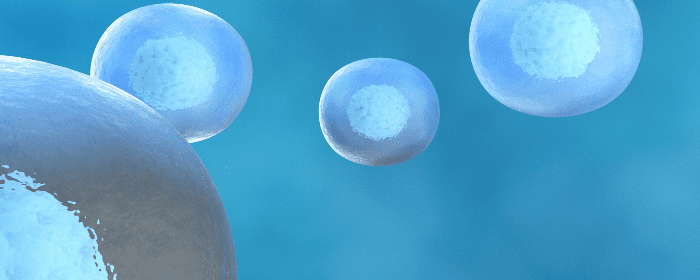

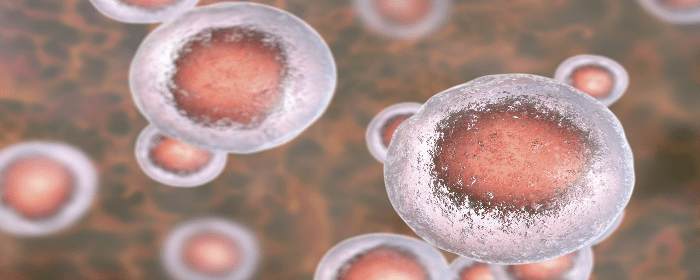
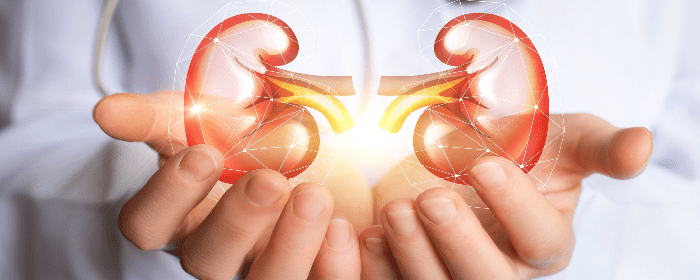
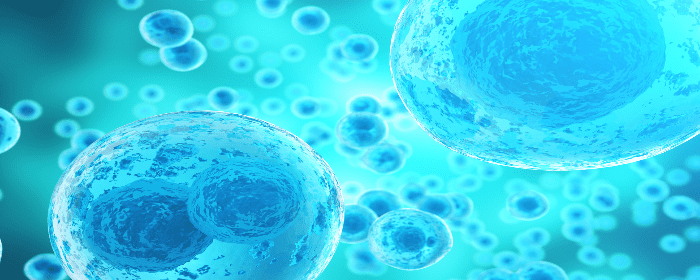
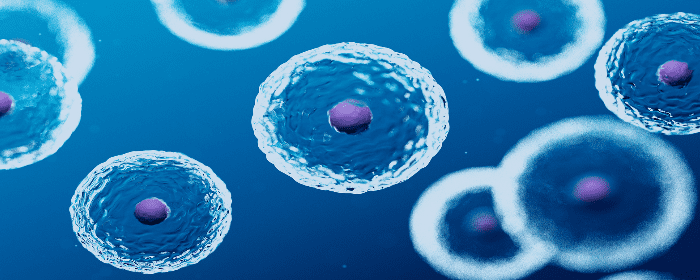

 St. Petersburg, Florida
St. Petersburg, Florida
